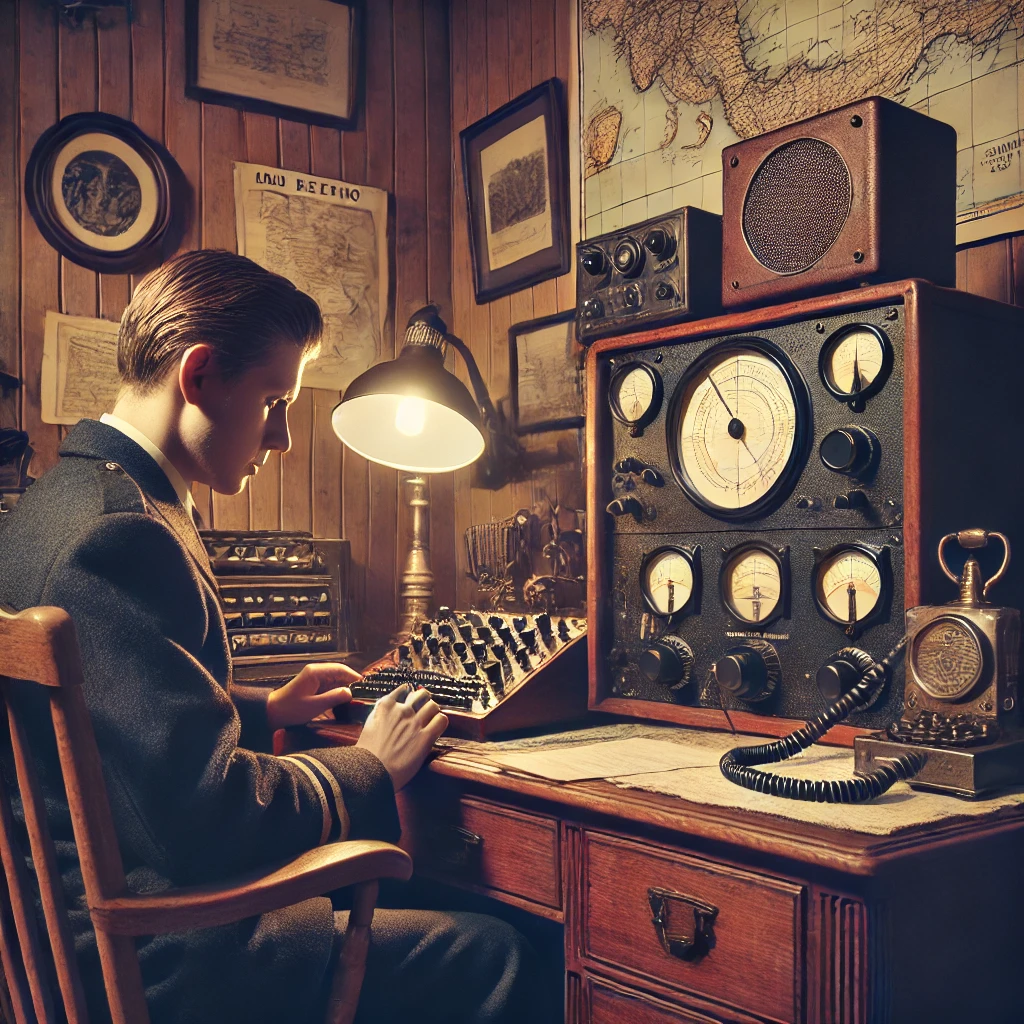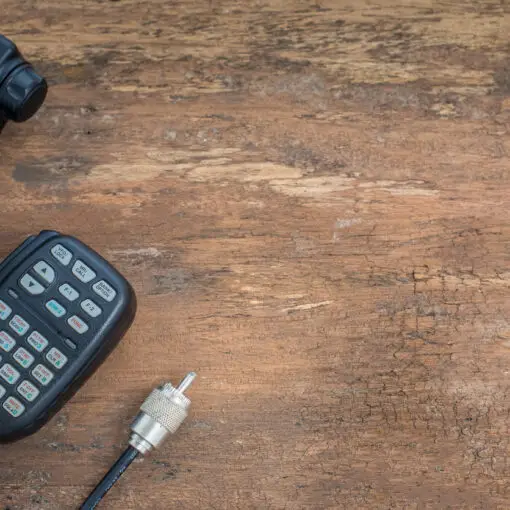Ham radio, also known as amateur radio, has a rich and storied history that stretches back over a century. This form of communication has evolved significantly, marked by innovation and perseverance. From its inception in the early 20th century to its vital role in emergency communication today, ham radio has had a lasting impact on society and technology.

What are the key historical moments that have shaped ham radio into what it is today? By examining major events and milestones in its development, we can gain a deeper appreciation for the contributions of amateur radio operators to the fields of science, engineering, and community service.
1) First Amateur Radio License Issued (1912)

In 1912, the United States government began issuing the first amateur radio licenses. This marked a significant milestone as it brought formal regulation to the growing hobby of amateur radio. Prior to this, there were no licensing requirements, and enthusiasts could operate their equipment freely.
The Radio Act of 1912 was passed by Congress to curb interference and organize the radio spectrum. This act required all amateur radio operators to be licensed and set specific frequency limits for their operations. It also marked the beginning of a more structured approach to radio communication.
Licensing was managed by the Department of Commerce. The first licenses issued under this act represented a new era of accountability and standards in radio communication. The introduction of licenses helped organize the airwaves and ensured that amateur operators adhered to best practices.
This move was essential in the development of amateur radio and laid the groundwork for what it would become in the future. The regulation ensured that operators maintained a level of professionalism and responsibility in their transmissions. For more detailed information on this historic event, visit the History of Amateur Radio.
2) Formation of ARRL (American Radio Relay League) (1914)
The American Radio Relay League (ARRL) was established on April 6, 1914. It was founded by Hiram Percy Maxim and Clarence D. Tuska, both from Hartford, Connecticut. Maxim and Tuska aimed to create a network for amateur radio operators.
ARRL quickly garnered support from radio enthusiasts across the country. Its main goal was to improve communication among amateur radio operators, also known as “hams.” The organization played a key role in developing standards and practices for amateur radio.
In addition to fostering communication, ARRL represented amateur radio operators before federal regulatory bodies. This was crucial as it helped protect the interests of operators and ensured they could continue their activities.
ARRL also provided technical advice and resources to its members. It facilitated training and education in the field of radio communication, helping to advance the skills of amateur radio enthusiasts.
Today, ARRL remains a prominent organization in the amateur radio community. Its historical significance and continued influence make it a cornerstone in the world of radio communication. Those interested in learning more can explore its history and impact.
3) Transatlantic Tests (1921)
In 1921, a significant milestone in ham radio history took place. The Transatlantic Tests aimed to prove that amateur radio operators could communicate across the Atlantic Ocean using shortwave frequencies.
On December 11, 1921, a historic moment occurred when the signal from the amateur station 1BCG in Greenwich, Connecticut was successfully received in Ardrossan, Scotland. This marked the first successful transatlantic radio transmission via shortwave.
The success of these tests was a huge achievement for amateur radio enthusiasts. It demonstrated that shortwave frequencies could be used effectively for long-distance communication.
These tests countered the skepticism from large communication companies and governments. Prior to the tests, amateurs had been restricted to wavelengths shorter than 200 meters. The Transatlantic Tests validated the potential of amateur radio operators in overcoming these limitations.
The 100th anniversary of the Transatlantic Tests celebrated this landmark achievement. It highlighted the planning, design, and execution that went into making history. The tests continue to be a proud moment in the legacy of ham radio.
These tests initiated a series of experiments, active between 1921 and 1924, pushing the boundaries of radio communication. This period of innovation laid the groundwork for many future advancements in amateur radio technology.
4) Creation of the Call Sign System (1923)
In 1923, the creation of the call sign system marked a significant moment in amateur radio history. Before this, radio operators used informal and often confusing methods to identify themselves. The formalization of call signs helped bring order to the growing number of amateur radio enthusiasts.
Initially, call signs were regulated by the Department of Commerce in the United States. This regulatory body was responsible for issuing unique identifiers to operators, ensuring that each call sign was distinct and could be easily recognized.
The implementation of call signs also standardized communications. Operators worldwide could now identify each other more efficiently, paving the way for international interactions. This system was crucial during events like natural disasters, where effective communication was essential.
The structure of call signs included a prefix and a suffix. The prefix usually indicated the country of origin, while the suffix was a unique set of letters. This allowed for easy identification of both the operator and their location.
The creation of the call sign system wasn’t just a U.S. initiative. Other countries adopted similar systems, further enhancing global communication. The call sign system allowed amateur radio to evolve into a more organized and efficient hobby, contributing to its longevity and popularity. For more, check out this detailed article.
5) Introduction of Single Sideband Modulation (SSB) (1947)
In 1947, Single Sideband Modulation (SSB) revolutionized radio communication. It is a form of amplitude modulation that uses transmitter power and bandwidth more efficiently. The method eliminates the carrier wave and one of the sidebands, transmitting only essential information.
SSB became popular among amateur radio operators, who found it enhanced their communication abilities. Using SSB, hams could reach longer distances with clearer signals and less interference. This made it especially valuable during crowded or noisy conditions.
The initial adoption of SSB among amateur radio enthusiasts set the stage for its broader use. Over time, it became a standard in various fields, including commercial radio and military communications. This shift marked a significant development in radio technology.
The effectiveness of SSB was not just technical. It also influenced historical events, as it played a part in communication strategies during the Cold War. Amateur operators who adopted SSB early contributed to this broader impact.
As a development in radio technology, SSB represents one of the key innovations that continue to influence modern communications. It allowed for more efficient use of radio frequencies, which remains an essential aspect of today’s wireless communication systems.
6) Launch of OSCAR-1 (First Amateur Radio Satellite) (1961)
The launch of OSCAR-1 marked a significant milestone in amateur radio history. Launched on December 12, 1961, by a Thor-DM21 Agena B rocket from Vandenberg Air Force Base, California, it became the world’s first privately funded non-governmental satellite.
OSCAR-1 was a collaborative effort by a team of amateur radio operators from California. These operators built the satellite for only 63 dollars, an impressive feat at the time. The satellite’s dimensions were 30 x 25 x 12 cm, and it weighed around 22 pounds.
Once in orbit, OSCAR-1 operated for nearly 20 days. Its primary mission was to test radio reception from space. During its operational period, thousands of radio enthusiasts from 28 countries successfully received its simple “hi-hi” signal. This success demonstrated the potential of amateur radio in space communication.
The project received recognition from notable figures, including Vice President Lyndon Johnson. It was praised for symbolizing the innovative spirit of amateur radio enthusiasts. This landmark event paved the way for the development of future amateur radio satellites, which are now commonly referred to as OSCARs.
For more about OSCAR-1, visit the National Air and Space Museum.
7) Invention of Packet Radio (1978)
Packet radio was invented in 1978. This technology allowed for the transmission of digital data via amateur radio frequencies. It was named for its use of packet switching, a method of grouping data into packets for transmission.
The development of packet radio originated from the need for more efficient data communication. The AX.25 protocol was adapted for amateur radio from the X.25 protocol suite. This innovation made it possible to create wireless computer networks.
Packet radio networks became popular among amateur radio operators. They allowed hams to send messages, transmit data, and even access bulletin board systems. These packet radio networks became an essential part of many emergency communications setups.
The adoption of packet radio also led to the creation of the first wireless computer networks. It enabled digital communication over long distances, without relying on traditional phone lines or internet infrastructure. Today, packet radio continues to be used in various applications, especially in areas with limited connectivity.
For more on the history and applications of packet radio, you can visit Amateur Radio Wiki.
8) Establishment of the International Space Station (ISS) Ham Radio (2000)
In November 2000, the International Space Station (ISS) became a host to amateur radio equipment. This marked the beginning of a unique educational and communicative endeavor.
The ISS Ham Radio program, also known as ARISS, allows astronauts and cosmonauts with amateur radio licenses to make contact with people on Earth. This project was set up with help from ham radio operators from the USA, Russia, Japan, Europe, and Canada.
These contacts provide opportunities for students worldwide to engage with astronauts, fostering interest in space and science. Amateur radio on the ISS has been a continuous operation since its start.
Astronauts onboard use the equipment to talk to schools and organizations, piquing interest in science and technology. For over 20 years, this initiative has supported around a hundred contacts each year, promoting education and outreach.
The ISS Ham Radio is more than just a communication tool; it’s an inspiring project that brings space exploration closer to the ground. This ongoing program continues to make a significant impact on educational outreach.
The success of ISS Ham Radio also highlights collaboration among international space agencies and amateur radio communities to bring space communications to new heights.
9) First Digital Mobile Radio (DMR) World-Wide Contact (2010)
In 2010, a major milestone in ham radio history was achieved with the first world-wide contact using Digital Mobile Radio (DMR). This event marked the growing adoption of DMR technology in the amateur radio community.
DMR uses Time Division Multiple Access (TDMA). This system splits a single frequency into two alternating time slots. This allows two separate conversations to take place on the same frequency simultaneously.
This groundbreaking contact showcased the efficiency and advanced capabilities of DMR. It also demonstrated its potential to enhance global communication among amateur radio operators.
The successful global contact in 2010 highlighted the growing interest in digital voice technology. Ham radio enthusiasts began exploring DMR’s capabilities for clearer and more reliable communication.
The European Telecommunications Standards Institute (ETSI) developed DMR as a low-cost and user-friendly digital radio standard. It has since become a key player in non-public radio networks around the world.
The introduction of DMR to the amateur radio world brought with it new terms and concepts. These include tiers, talk groups, and code plugs. Understanding these concepts is essential for effective use of DMR technology. For more information, you can check out a comprehensive guide on DMR in ham radio.
10) Introduction of FT8 Digital Mode (2017)
The FT8 digital mode was introduced in 2017. It quickly became popular among amateur radio operators. This new mode is a type of frequency shift keying, which allows for efficient communication even with weak signals.
FT8 was developed by Joe Taylor, K1JT, and Steve Franke, K9AN. The mode was part of the software package called WSJT. FT8’s release date was June 29, 2017.
By the end of 2017, more FT8 contacts were being confirmed on Club Log than traditional CW or SSB contacts, indicating its fast adoption among radio amateurs. The mode offers quick data transmissions and works well under poor conditions.
Its predecessors, JT65HF, and other WSJT modes, had already made an impact on amateur radio. But FT8 brought the speed and efficiency that operators desired. Its popularity shows how digital modes are changing the landscape of ham radio.
For beginners, guides such as the one found on W4YAF provide helpful tips to get started with FT8. This marks a significant development in amateur radio, illustrating the shift towards modern digital communication.
The Origin of Ham Radio
In the late 19th and early 20th centuries, significant discoveries in electromagnetic waves paved the way for the development of ham radio. Key figures like James Clerk Maxwell and Guglielmo Marconi were instrumental in this groundbreaking work.
Early Experimentation
James Clerk Maxwell presented his theory of the electromagnetic field in 1873. His work laid the foundation for understanding radio waves. Maxwell’s equations showed how electric and magnetic fields interact and propagate, a crucial insight for later radio technology.
Guglielmo Marconi took Maxwell’s theory and applied it practically. In 1901, Marconi achieved a milestone by successfully transmitting a radio signal across the Atlantic Ocean. This demonstrated the potential for long-distance wireless communication.
These early experiments were pivotal. They demonstrated that electromagnetic waves could be used for communication over vast distances, paving the way for future advancements in radio technology.
First Licensed Radio Operators
As radio technology advanced, the need for regulation became apparent. In 1912, the U.S. Congress passed the Radio Act of 1912. This law required radio operators to be licensed, a necessary step to curb interference and allocate radio frequencies efficiently.
The act ensured that amateurs, known today as “hams,” had to obtain licenses to operate their radio stations. This formalized the practice and helped maintain order on the airwaves.
The first licensed radio operators were pioneers. They navigated new technological landscapes and helped set standards for radio communication. Their contributions were instrumental in the growth and development of ham radio as a popular hobby and essential service.
By the 1920s, long-distance ham radio communications had become possible, thanks to advancements and the dedication of these early licensed operators.
Technological Advances
Ham radio has seen critical technological advances that revolutionized communication. Key innovations like the invention of the vacuum tube and the development of transistors have played significant roles.
Invention of the Vacuum Tube
The invention of the vacuum tube marked a pivotal moment in ham radio history. In 1906, Lee De Forest developed the Audion, the first triode vacuum tube. This invention amplified weak radio signals, making long-distance communication possible.
Before the vacuum tube, early radio equipment used crystals, which provided limited range and signal strength. The vacuum tube, with its ability to amplify signals, allowed operators to send and receive clearer messages over greater distances. This led to more reliable and effective communication.
By the 1920s, vacuum tubes became standard in radio equipment. This technology continued to evolve, enabling more complex and powerful transmitters and receivers. The vacuum tube remained a cornerstone in radio technology until the mid-20th century when it was gradually replaced by transistors.
Development of Transistors
The development of transistors revolutionized ham radio, making equipment smaller, more efficient, and more reliable. Invented in 1947 by John Bardeen, Walter Brattain, and William Shockley at Bell Laboratories, transistors quickly replaced vacuum tubes in many applications.
Transistors offered several advantages over vacuum tubes. They were smaller, consumed less power, and produced less heat. This made radio equipment more portable and practical for amateur operators. Additionally, transistors had longer lifespans and were more durable, significantly improving the reliability of radio communication.
By the 1960s, transistors had become standard in most amateur radio equipment. Their use led to the development of new technologies and innovations in the field, greatly enhancing the capabilities of ham radio operators. Innovations such as solid-state amplifiers and integrated circuits emerged, further advancing communication technology.
Ham Radio in the Modern Era
Ham radio has evolved significantly, integrating cutting-edge digital communication tools and playing a crucial role in emergency services. These advancements have transformed the way amateur radio enthusiasts operate and contribute to society.
Digital Communication Innovations
Digital modes have revolutionized ham radio, making communication clearer and more efficient. Modes like PSK31, FT8, and JT65 are widely used. These digital modes allow for low-power transmissions and can reach great distances even under poor conditions. Software such as WSJT-X and FLdigi has become essential, providing user-friendly interfaces for digital communication.
Technological advances have also introduced software-defined radios (SDRs), which replace traditional hardware with software. SDRs offer flexibility, allowing users to upgrade their systems through software updates. This results in a more versatile and cost-effective setup for amateur radio operators.
Role in Emergency Services
Ham radio operators have a long history of supporting emergency services. During natural disasters and other crises, traditional communication networks often fail. Ham radio operators step in, providing vital communication links. Organizations like ARES (Amateur Radio Emergency Service) and RACES (Radio Amateur Civil Emergency Service) coordinate these efforts.
During Hurricane Katrina and other major events, ham radio operators relayed crucial information, aiding in rescue and relief operations. Their ability to set up communications quickly and operate independently of commercial power is invaluable. This role continues to grow as more people recognize the reliability and versatility of ham radio in emergencies.
Frequently Asked Questions
Ham radio has a rich history with many key events and innovations shaping its development. The answers below address common inquiries about its origins, terminology, and significance in historical contexts.
When was the first ham radio invented, and by whom?
The origins of ham radio trace back to the late 19th century. Pioneers like James Clerk Maxwell and Guglielmo Marconi made critical discoveries in electromagnetic waves and radio communication, laying the groundwork for ham radio.
Why is amateur radio commonly known as ‘ham radio’?
The term ‘ham radio’ comes from early radio operators who were known as “ham-fisted” operators due to their less than professional handling of equipment. Over time, this term became a badge of honor for amateur radio operators.
How did the first radio stations shape the programming and culture of ham radio?
Early radio stations in the 1920s played a crucial role in shaping ham radio traditions. These stations followed rigorous protocols and helped in establishing a culture of discipline and technical excellence among amateur radio operators.
Who was the first amateur radio operator, and what was their contribution to the field?
One of the earliest notable amateur radio operators was Guglielmo Marconi, who not only made the first successful transatlantic transmission in 1901 but also demonstrated the potential of radio communication for long-distance contacts.
What role did ham radio play in significant historical events?
Ham radio has been instrumental in many historical moments, such as providing emergency communication during natural disasters and wartime. For instance, it played a crucial role in the war years when traditional communication lines were down.
Can you explain the significance of ‘Field Day’ in ham radio history?
Field Day is the most popular on-the-air event held annually in the USA and Canada. Introduced by the ARRL in 1933, it tests operators’ abilities to set up and operate portable stations under emergency conditions, highlighting the importance of readiness and skills in the amateur radio community.





